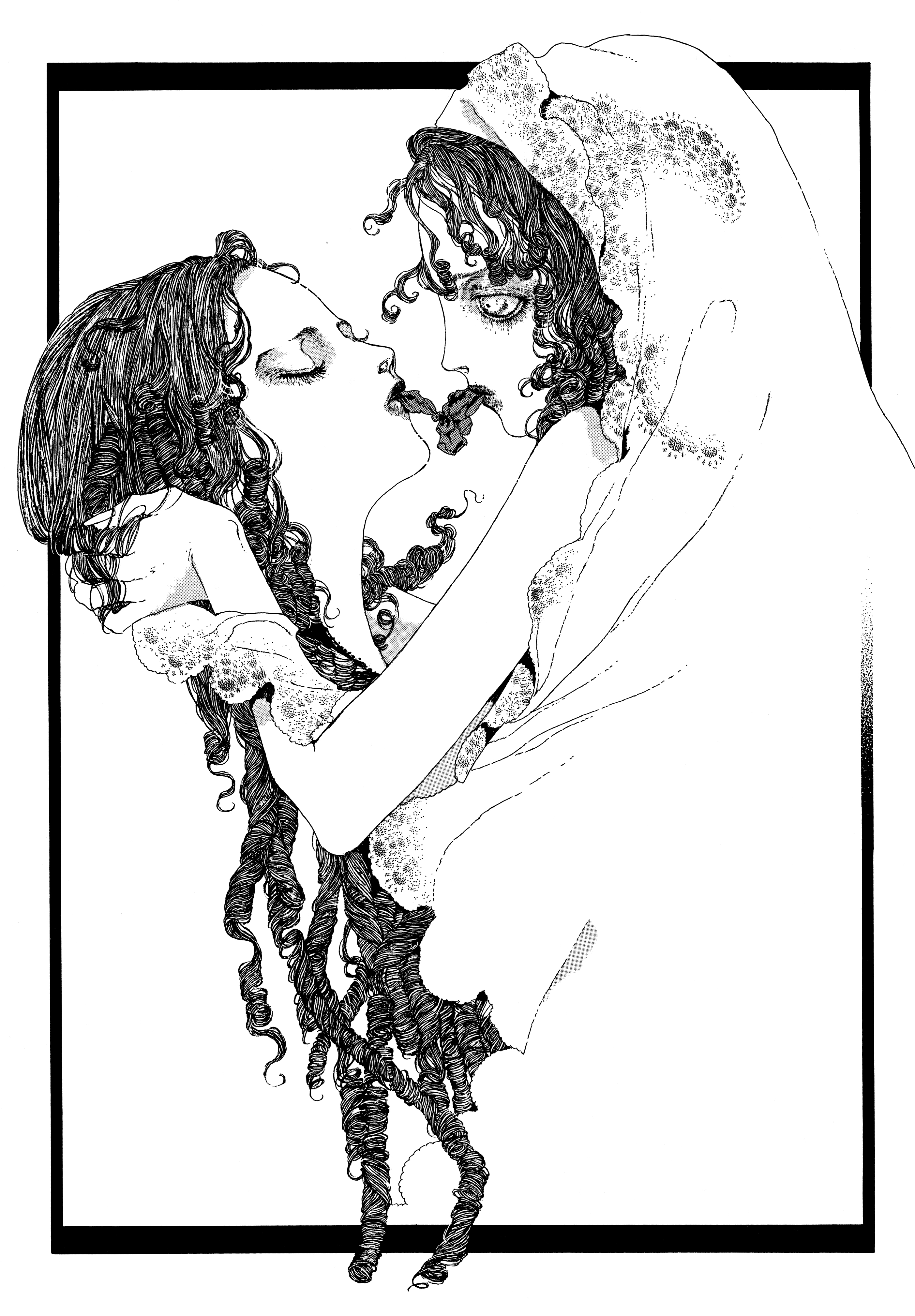Takaya Miou
The Poet Sapphō
Japan, 2007
Drawing (genga), ink and screen-tone on Kent paper,
Collection of the artist (L.2016-16.24)
© Takaya Miou, 2007
Like the hyacinth in the mountains that shepherd men
With their feet trample down and on the ground the purple flower.
(Trans. Richard Jenkyns, 1982.)
Critics have interpreted this poem as an expression of Sapphō’s distain for heterosexual love. As an early apologist for female homosexuality, she was a source of inspiration for other writers, such as the French Symbolist poet Charles Baudelaire (1821–1867), who praised unconventional relationships:
Lesbos, where courtesans feel drawn toward each other,
Where for every sigh there is an answering sigh,
The stars admire you as much as Paphos,
And Venus may rightly be jealous of Sapphō!
Lesbos, where courtesans feel drawn toward each other.
(Excerpt from Baudelaire, “Lesbos,” Flowers of Evil, 1857. Trans. William Aggeler, 1954.)
Here, Takaya honors the legacy of Sapphō through a sensual image of two women embracing one another and suspending between their lips a delicate flower.






